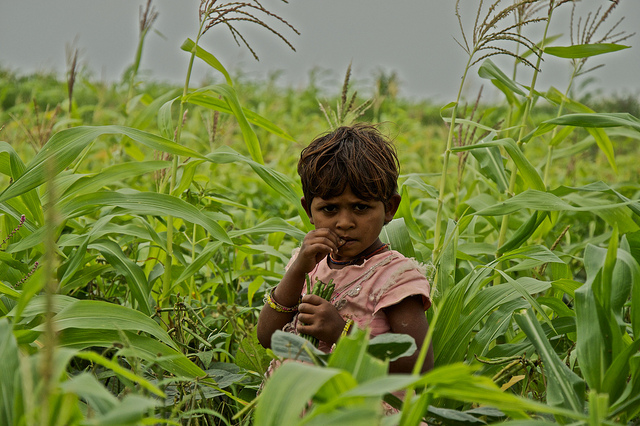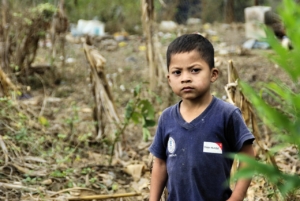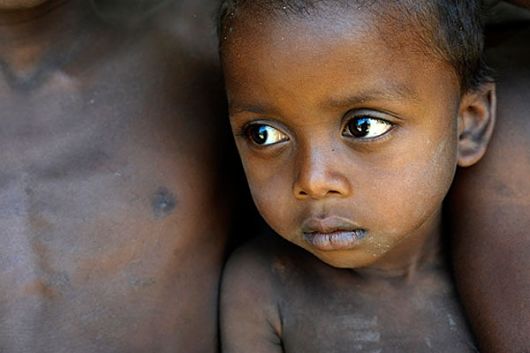
Thousands of children are facing starvation and hunger in Zimbabwe due to the worst drought in two decades. According to the World Food Programme, nearly four million Zimbabweans are struggling to meet their basic food needs.
Zimbabwe is considered a food-deficit country, ranked 156 out of 187 on the Global Hunger Index. Although food insecurity affects people of all ages, it is even more detrimental to children.
Studies show that proper nutrition is critical to children’s physical and emotional development. Children struggling with hunger are more likely to repeat a grade in primary school, experience impairments in language and motor skills, or have social and behavioral problems.
In Zimbabwe, only 17.3% of children between the ages of two and six receive the recommended minimum diet for adequate nutrition. A child suffering from malnutrition is more likely to contract diseases, such as HIV, or suffer from stunting. Currently, one in every three Zimbabwean children suffers from chronic malnutrition or stunting. Stunting alone contributes to more than 12,000 deaths per year.
Hunger in Zimbabwe has become a major issue, particularly for low-income families and their children. Struggling families are often pressured to accept a dowry for their young daughters. This provides food for the rest of the family, as well as a potentially more food-secure situation for their daughter.
Approximately one out of every three girls in Zimbabwe are married before their 18th birthday. Girls living in the poorest 20% of households were more than four times as likely to marry before the age of 18 than those living in the wealthiest 20% of households.
Both poverty and hunger in Zimbabwe have resulted in an unsafe environment for children.
In order to combat hunger in Zimbabwe, the World Food Programme has implemented the Protracted Relief and Recovery Operation (PRRO). The three primary focus areas of the operation are disaster response, food assistance and nutrition.
The disaster response and risk reduction program are designed to support food-insecure households affected by severe drought during the growing season.
Food Assistance for Assets provides cash and in-kind transfers, along with activities that promote self-reliance. It empowers vulnerable communities to move away from a dependence on food assistance.
The health and nutrition promotion is responsible for the Moderately Acutely Malnourished treatment, which assists pregnant and nursing women and children under the age of five. A stunting prevention program was also established in the same district.
With the help of the World Food Programme and other international organizations, hunger in Zimbabwe is decreasing and children are able to live healthier and happier lives.
– Kristyn Rohrer
Photo: Flickr

 The U.S. Department of Agriculture plans to ship
The U.S. Department of Agriculture plans to ship  The first of the United Nations Sustainable Development Goals is to end global poverty. The second is to
The first of the United Nations Sustainable Development Goals is to end global poverty. The second is to  What causes stunting? The World Health Organization (WHO) calls growth stunting one of the most significant impediments to human development.
What causes stunting? The World Health Organization (WHO) calls growth stunting one of the most significant impediments to human development. After the ISIS attacks on Paris, #PrayForParis appeared in thousands of tweets across the globe. People changed their profile pictures to match
After the ISIS attacks on Paris, #PrayForParis appeared in thousands of tweets across the globe. People changed their profile pictures to match 
 Feeding hungry children is one matter. Feeding hungry children nutritious meals, however, is an important aspect of ending hunger. About 360 million children sit down to a school meal every day. For some, this could be their only meal for the day.
Feeding hungry children is one matter. Feeding hungry children nutritious meals, however, is an important aspect of ending hunger. About 360 million children sit down to a school meal every day. For some, this could be their only meal for the day.
 Everybody loves a good snack. Salty or sweet, chewy or crunchy, snacking is a great part of anybody’s day. And though many don’t know it, it is also an opportunity to make a difference. So next time you tear into another bag, you should know about these three companies that are making a difference:
Everybody loves a good snack. Salty or sweet, chewy or crunchy, snacking is a great part of anybody’s day. And though many don’t know it, it is also an opportunity to make a difference. So next time you tear into another bag, you should know about these three companies that are making a difference: Malnutrition is responsible for causing over half of all child mortalities within the Sub-Saharan African nation of
Malnutrition is responsible for causing over half of all child mortalities within the Sub-Saharan African nation of 